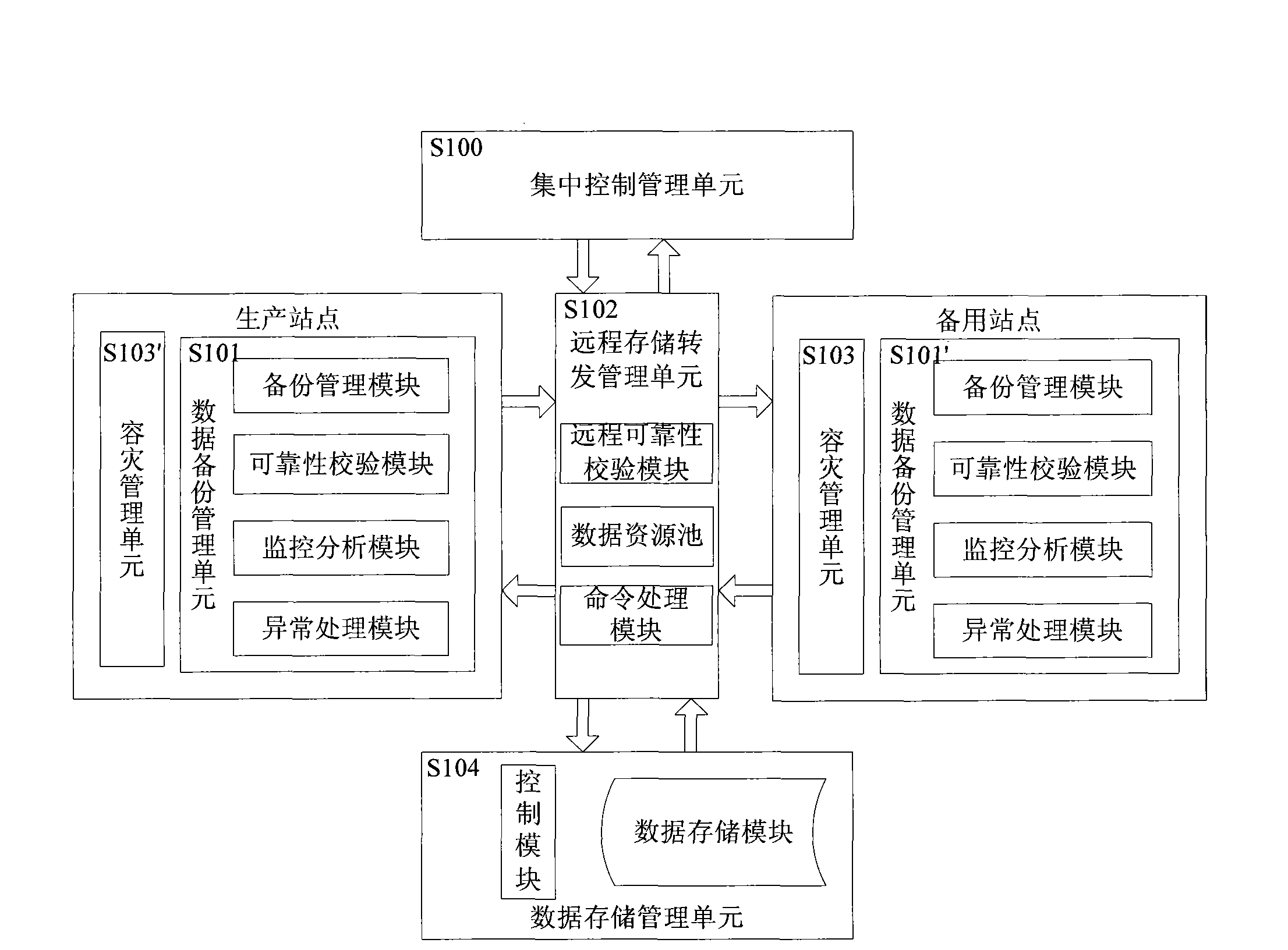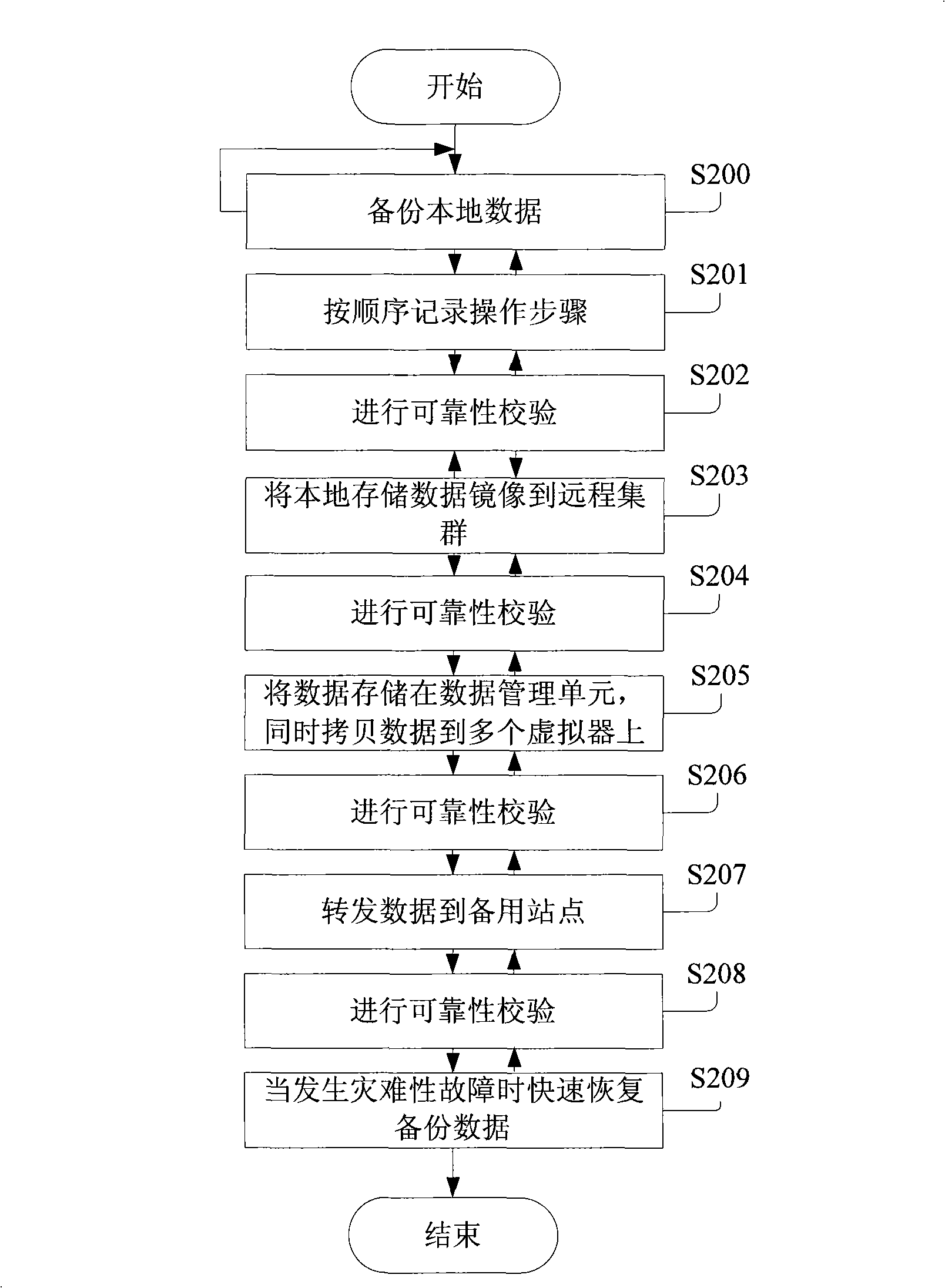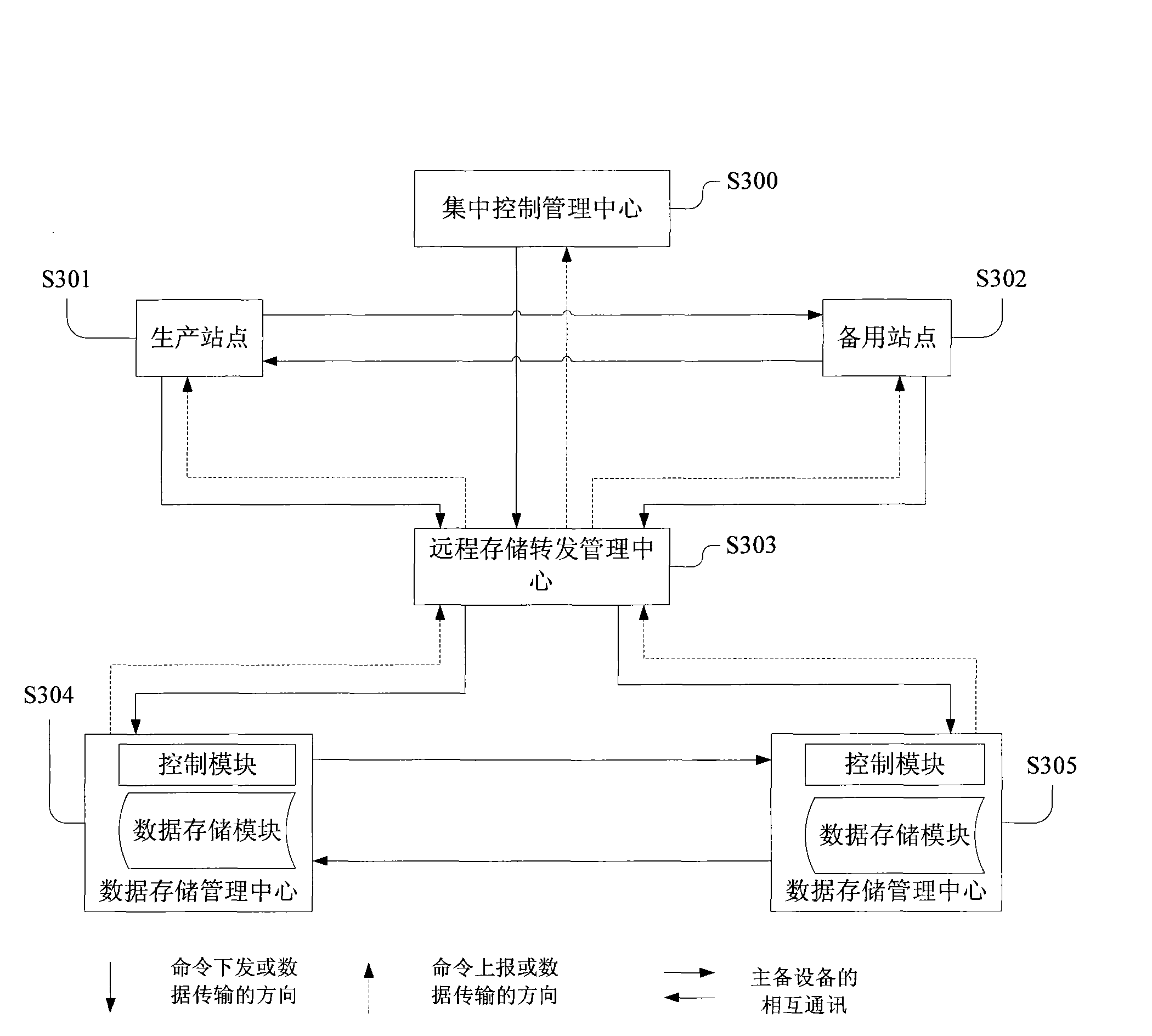Disaster tolerance system and disaster tolerance method thereof
A disaster recovery and management unit technology, applied in the field of network communication, can solve problems such as slow data recovery, difficulty in continuous operation of business systems, poor real-time performance, etc., to achieve the effect of ensuring continuity
- Summary
- Abstract
- Description
- Claims
- Application Information
AI Technical Summary
Problems solved by technology
Method used
Image
Examples
Embodiment 1
[0064] see figure 1 , which is a schematic structural diagram of the disaster recovery system of this embodiment. As shown in the figure, the disaster recovery system includes the following parts:
[0065] A. The centralized control management unit S100 adopts cluster management, adopts centralized management for local clusters and remote clusters, and conducts overall monitoring of local backup, remote replication, and recovery in the event of a disaster. The operation information is analyzed and processed in time, and at the same time, the initial configuration and condition setting of each management unit are performed when the system disaster recovery device is initially installed.
[0066] This unit can automatically or manually switch the faulty site to an available site. At the same time, it can also issue upload comparison and upload commands, that is, to compare whether the data in each site is consistent with the data in the data storage management unit. If inconsis...
Embodiment 2
[0113] see image 3 , which is a schematic diagram of the implementation scheme of the disaster recovery system of this embodiment, image 3 yes Figure 4 A special case of , where there is only one backup site, the following is for image 3 The workflow of the disaster recovery system will be described (each management center in this figure refers to the server where the corresponding management unit is located). The system includes: centralized control management center S300; production site S301; standby site S302; remote storage and forwarding management center S303; data storage management center (main) S304; data storage management center (standby) S305.
[0114] The centralized control management center S300 mainly monitors the entire disaster recovery system, issues relevant configuration operations, and receives information reported by each management unit forwarded by the remote store-and-forward management center S303.
[0115] When a disaster occurs, the central...
Embodiment 3
[0124] see Figure 4 , this figure shows a schematic diagram of the implementation of the disaster recovery system of this embodiment, which includes: a centralized control management center S400, a production site S401, a backup site 1S402, a backup site NS403, a remote storage and forwarding management center (master) S404, Remote store and forward management center (standby) S405, data storage management center (main) S406, data storage management center (standby) S407.
[0125] This figure is a schematic diagram of another embodiment of the disaster recovery system of the present invention, and its working principle is the same as image 3 The disaster recovery system with only one backup site is basically the same and will not be repeated.
[0126] Here is just a supplementary explanation. For multiple backup sites, the priority of the backup sites can be set in the centralized control management center S400 (automatically generated by default, and can also be manually m...
PUM
 Login to View More
Login to View More Abstract
Description
Claims
Application Information
 Login to View More
Login to View More - R&D
- Intellectual Property
- Life Sciences
- Materials
- Tech Scout
- Unparalleled Data Quality
- Higher Quality Content
- 60% Fewer Hallucinations
Browse by: Latest US Patents, China's latest patents, Technical Efficacy Thesaurus, Application Domain, Technology Topic, Popular Technical Reports.
© 2025 PatSnap. All rights reserved.Legal|Privacy policy|Modern Slavery Act Transparency Statement|Sitemap|About US| Contact US: help@patsnap.com



